What is autism? What are its characteristics? How common is it? How do you diagnose? How are you treated? Is there evidence of successful autism treatment? What is the chance that the autistic child will lead an independent life?
Autism is a general name for a spectrum of conditions characterized by a developmental-neurological disorder that makes it difficult for a person to have social and communicative interaction.
Many qualitative studies done in different countries, including the USA and England, ruled out any connection between autism and the triple vaccine given at the age of one.
It has been suspected that exposing the fetus to infections such as CMV or rubella viruses increases the risk that he will suffer from autism. Older age of the parents is also a risk factor.
The severity of the disorder has different degrees. That’s why the exact name is “autism spectrum disorders” in English: autism spectrum disorders. Autism can usually be diagnosed in the first years of a child’s life.
In the past it was customary to separate autism from other disorders that are now included in the autistic spectrum. This refers, among other things, to “pervasive developmental disorders” (PDD) and Asperger’s syndrome.
However, since the publication of the latest version of the book of psychiatric diagnoses, which is considered the bible of psychiatrists (DSM-5), the accepted name is, as mentioned, “autistic spectrum disorder”.
The children with severe autism do not speak at all, and their behavior is usually different from the normal behavior of their peers, while children on the “spectrum” with mild or moderate severity behave and speak similarly to their peers, but have difficulties understanding and maintaining normal mutual communication.
The disorder is characterized by difficulties and delays in social interaction and language acquisition, and in some cases there are impairments in cognitive, motor and sensory abilities. The disorders are expressed in a wide range of the child’s emotional abilities as well as in “patterned” behaviors that are expressed in play and language.
In the 50s of the last century, autism was still seen as a psychological disorder caused by the rejection of the baby by the mother who does not respond to his needs. Contrary to this approach, today we know that genetic, metabolic and environmental factors cause the appearance of autism.
What are the characteristics of autism?
The manifestations of autism begin to appear already in the first year of the baby’s life or later, in the first years of life.
Three possible clinical moves are described in the literature:
1. The baby suffers from developmental difficulties at an early stage.
2. The baby initially shows normal development, and only at the age of 12 to 18 months do signs of autism appear, and his development is stunted.
3. The baby exhibits normal development in the first year of life and developmental regression in the second year.
These are the main symptoms that appear in children diagnosed with an autism spectrum disorder:
• Poor social interaction (difficulty in correctly understanding social behavior, making contact or conducting a conversation).
• Deficiencies in verbal and non-verbal communication (absence of language use or ineffective use of language. Autistic people do not maintain eye contact during conversation, and they do not have a match between facial expression and body language and the verbal content).
• Narrow and limited areas of interest and/or limited repetitive activities (the game is different than in their peers. Sometimes they show an increased interest in strange areas such as the numbers of the bus lines, etc.).
Deficiencies on the social level The
symptoms of autism vary in severity and in the way they manifest in different children. However, most autistic children have deficits in the ability to pay attention: they cannot – fully or partially – make eye contact and point to an object they are interested in or point to an interesting object to share the interest with someone else.
There are autistic people who can make eye contact intermittently and make contact with the environment temporarily or partially. Sometimes such a temporary relationship is accompanied by a smile or a hug, but such behavior originates from the child’s initiative, and it is difficult to stimulate it through another person.
On the other hand, from babies and children who do not suffer from the disorder, it is possible to “extract” a smile or a hug through external stimulation. Such behavior indicates a lack of social reciprocity. This is accompanied by deficiencies in the ability to develop emotional relationships that are part of every interpersonal relationship.
The autistic child does not usually participate in social games – even the simplest ones – and prefers to occupy himself alone. By the way, he demonstrates a lack of awareness of others. Such behavior is an expression of a disturbance in the ability to connect with children or adults. Sometimes the autistic children prefer to play with adults or with children younger than them.
Deficiencies on the communication level
Autistic children have a problem with verbal communication. Language development is delayed, and the range of damage can be wide: from a lack of speech at all to a pronounced ability to speak that is reflected in speaking a lot and using high-pitched language.
An autistic child may speak a unique personal language that is understood only by him or his relatives (such as gibberish). A prominent phenomenon among autistic children is strange pronunciation and intonation (speaking in a strange speech melody, like the speech of a computer) and sometimes echolalia (repeating a certain word, meaningless speech and a connection to what is happening in his environment and reversal of personal pronouns).
The deficits in the behavioral plane
Autistic children tend to display repetitive behavior patterns: repetitive body movements such as waving the hands or repetitive and monotonous movements. Another similar characteristic is seemingly obsessive behavior such as walking a fixed route to school or arranging objects in a row, increased preoccupation with objects and abnormal clinging to them.
Autistic children also tend to have narrow interests and react sharply to changes in routine.
Are autistic people also mentally retarded?
According to professional literature, about 75% of autistic children are mentally retarded. However, the intellectual behavior of some of them is characterized by a relatively developed talent in a certain field such as assembling puzzles, art or music. About 25% of those with autism develop seizures during adolescence, which are a manifestation of epilepsy .
The statistics refer to large groups of the population and do not characterize a particular person.
The best predictors for the autistic child’s future are his level of functioning in the area of language around the age of 5 and his IQ. However, even autistics who reach adulthood and demonstrate normal functioning continue to suffer from problems on the three levels mentioned earlier: social, communicative and behavioral.
How common is autism?
According to a circular of the Ministry of Health from 2013, the prevalence of autism reaches 10 children out of 1,000.
In recent decades there has been a constant increase in the diagnosis of autism. This increase is attributed – at least in part – to a higher awareness of the syndrome both among the general public and among professionals.
Other reasons are changes in the definition of the syndrome and changes in lifestyle which expose more fetuses to biological risk factors such as older age of the parents at the time of the child’s birth.
What causes autism?
It is still not known for certain what causes autism, but most likely the syndrome has many combined factors (in the words of doctors: a multifactorial mechanism).
Family studies and twin studies reinforce the belief that genetic (hereditary) factors are responsible – at least partially – for the syndrome.
Research on identical twins shows that if one of the twins is autistic, the risk that the (identical) twin will also be autistic ranges from 60% to 90%. When it comes to non-identical twins or normal siblings, one of whom is autistic, the risk of the other sibling being autistic ranges from 3% to 10%. This risk rate is not affected by the socioeconomic status of the parents or their education.
In addition, it was found that if there is an autistic child in the family, there is a 20% probability that other family members will have a language disorder.
Despite the evidence that autism has a genetic component, genetics only explains about 25% of autism cases. In about 5% of autism cases, a chromosomal disorder can be found that is responsible for it (such as Prader-Willi syndrome, Engelmann syndrome or Down syndrome). In about another 5% of cases, a disorder can be found in a single gene (as in fragile X syndrome and Soto syndrome).
It was also suspected that exposing the fetus to anticonvulsant drugs or to various infections, such as the CMV virus or the rubella virus , increases the risk that it will suffer from autism.
A certain relationship was found between the risk of autism and the area where the autistic child’s family lived at the time of birth. For example, a connection was found between living near major transportation arteries and an increase in the rate of autism. It also turned out that the older the parents – and especially the father – the greater the risk of having an autistic child.
Risk factors during pregnancy
Various complications and situations in pregnancy may be risk factors for autism. In the studies conducted, a statistical relationship was found, but a clear causal relationship was not necessarily proven between the conditions and complications listed below and the development of autism.
- Dysfunction of the thyroid gland in the mother. Even mild hypothyroidism can increase the risk of autism.
- Pregnancy complications such as premature birth (premature birth), low birth weight, preeclampsia , gestational diabetes , placental abruption , delayed growth of the fetus inside the uterus and interference with the supply of oxygen to the fetus during birth.
- Low levels of vitamins and minerals during pregnancy – mainly a lack of folic acid (which is important for the development of the central nervous system in the fetus), a low level of vitamin D or anemia as a result of iron deficiency.
- Infection with viral or bacterial diseases during pregnancy. Receiving vaccinations in advance, before pregnancy, against viral diseases (such as influenza , chicken pox and rubella ) reduces the morbidity of these diseases and may reduce the risk of having a child with autism.
- Drinking alcohol and taking certain medications. You should completely avoid drinking alcohol during pregnancy and you should check with your doctor about the safety of any medication you take during pregnancy.
- Induction or induction of labor using the hormone oxytocin (pitocin).
In recent years, several studies have been published that tried to check whether there is a connection between induction or induction of labor using the hormone oxytocin (responsible, among other things, for uterine contractions) and an increased risk of autism. - In some studies such an increased risk was found, while in other studies no such relationship was found. In any case, it seems that the administration of pitocin is not an exclusive cause of autism and there is room for further studies on this issue.
- In vitro fertilization (IVF). There are several studies that show that there is a connection between in vitro fertilization and an increase in the risk of developing autism. However, it should be emphasized that this is a controversial issue in the world of medicine.
- In the past, there was an opinion according to which autism stems from the parents’ (especially the mother’s) emotional distance from the baby, but many studies have rejected this assumption.
Can autism develop as a result of vaccines?
The opinion that there is a connection between autism and the triple vaccine given at the age of one has been completely denied. Many qualitative studies done in the USA, England and other countries have ruled out any connection between the vaccine and autism.
Furthermore, another study examined the possible connection between the preservative in this vaccine and other vaccines and autism, and this test also did not reveal any connection between the two things. Therefore, it is possible to state with certainty that autism is not caused by any vaccine.
What signs may raise suspicion of autism?
A red light should be turned on by the parents in view of deficiencies in the social development of the baby. A lack of social skills is manifested in the following ways:
- Poor or missing eye contact.
- A baby/toddler who does not respond to his name being called.
- A baby/toddler who does not point to objects.
- A baby/toddler who does not form an interactive relationship with the parents.
- A baby/toddler who is not smiling.
- A baby/toddler who shows no interest in other children.
A delay in the development of language and social skills or a retreat in these parameters after they have developed raises the suspicion of autism and requires a developmental assessment to be done as soon as possible.
As soon as the suspicion is established, the child is referred to a diagnostic and screening system to rule out or confirm this suspicion.
There are several assessment systems that can be used to test the degree of autistic impairment as well as IQ. The diagnosis is essential so that it is possible to decide on the appropriate treatment – which is recommended to start as early as possible.
How is autism diagnosed?
When a communication disability is suspected for the first time, the recommendation for parents is to consult the pediatrician. If necessary, the doctor will refer the child to the Child Development Institute or to a unit specializing in early childhood care in his area of residence. There the child will undergo a more comprehensive assessment to determine the cause of his difficulties.
The assessment is usually given by several professionals. One of them will be a child neurologist or a child development specialist or a child psychiatrist. Part of the diagnosis will be done by a psychologist. Other important professionals in the fields of diagnosis and treatment are speech therapists, occupational therapists, and social workers.
Today there are still no laboratory tests or imaging tests that diagnose autism. Imaging tests – CT or MRI – performed on the brains of autistic children revealed findings indicating structural changes that may be related to autism. However, in terms of diagnosis, treatment or prognosis, these findings are of little value.
Is there a treatment for autism?
Autism treatment is inclusive and multi-professional, and professionals from different fields are integrated into it. The team must create a comprehensive action plan for the care of the child at home and in the educational setting. The parents are central partners in the treatment.
Studies show that the number of hours of treatment the child receives has a direct effect on his chances of progress and the rate of progress. On top of that, the earlier the intervention is done, the greater the chances of building more normal communication patterns and relationships.
There is no proven drug treatment for autism. There are claims about the success of various treatments for autism, for example dietary changes, but unfortunately none of them have proven their effectiveness or stood up to real scientific scrutiny.
On top of that, not only did such treatments not help, but they delayed the start of the behavioral treatments which are the only means so far proven to be able to help autistic children.
In autistic children who suffer from psychiatric symptoms, treatment with psychiatric drugs may have a positive effect. These are symptoms such as hyperactivity, tantrums, a tendency to physical violence, a tendency to cause self-harm and obsessive compulsive behavior.
Is there evidence of successful autism treatment?
There is convincing and clear evidence that intensive behavioral therapy, which begins before the age of 3 and focuses on the development of language and speech, may lead to a significant improvement in verbal abilities. At a later stage, this treatment also affects social functioning.
Controlled studies on the provision of intensive behavioral treatments (40 hours per week) to small children for two years indicate that these have achieved significant progress in the areas of behavior and cognition.
In therapy, the emphasis is on acquiring behavior that is adapted to the situation, on acquiring the ability to imitate the other, on acquiring language and connecting with children of the same age group. The treatment plan is customized according to the abilities and difficulties of the treated child. It has been proven that training to improve social skills is also effective – especially as part of group therapy.
Along with these, it is important to give support to the parents as it turned out that this is essential for the overall well-being of the child. Most autistic children need a special educational framework, even if their language skills are close to normal. In Israel there are two main bodies that concentrate the field of media kindergartens: ALOT and the association for children at risk.
Children and adolescents who suffer from deficiencies in social skills sometimes also suffer from psychiatric symptoms (such as depression , anxiety and obsessive compulsive behavior). They can be helped through psychotherapy, behavioral or cognitive therapy and also through psychiatric drugs.
Can medical cannabis treatment be beneficial?
Recently, a lot of interest has arisen regarding the possibility of treating autistic children using medical cannabis. Studies are being conducted regarding the benefit of such treatment, but no conclusions have yet been published, so no established medical body has yet officially approved this treatment.
Still, since there are currently more than 200 autistic children in Israel who are being treated with medical cannabis, and quite a bit of evidence has accumulated of an improvement in their condition, the medical establishment has formed the opinion that there is room to try cannabis treatment for autistic children who suffer from severe disorders such as extreme restlessness, anxiety, obsessions, Outbursts of anger, acute sleep problems and the like.
In particular, there is currently a tendency to approve treatment with medical cannabis for such children who received treatment with psychiatric drugs, but these did not improve their condition.
However, if the autistic child does not need treatment with psychiatric drugs, and the quality of life for him and his family members is good, the recommendation today is not to treat him with medical cannabis, but to wait until official studies are published.
What is the chance that the autistic child will lead an independent life?
There are children, especially those who have managed to acquire language and speech skills, who may live independent lives when they grow up, even if they are socially withdrawn. Many others will depend on their families or welfare agencies to manage their daily lives.




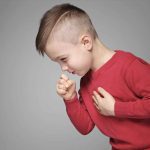

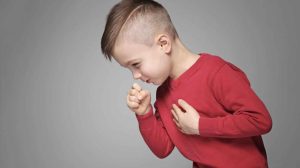

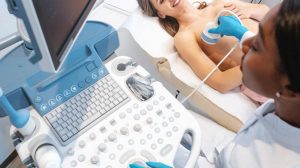
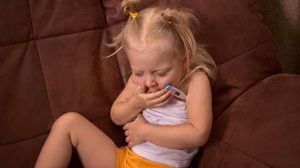
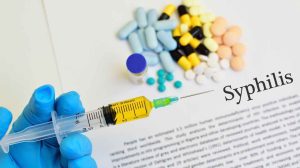
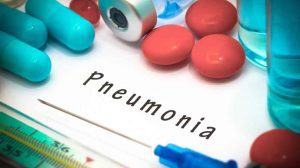
Add Comment